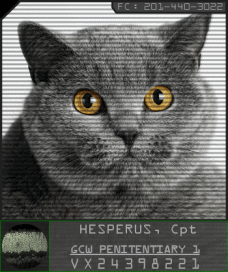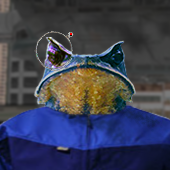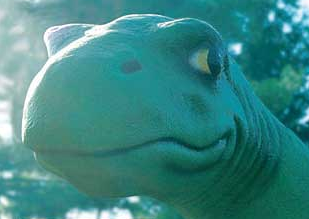Species
There are 10 species in Classic Elite & Oolite. But only humans and Thargoids in Frontier (FE2) and Frontier: First Encounters (FFE).
In Oolite & Elite the species are
- Human Colonials
- Humanoids
- Avian/Birds
- Batrachians/Frogs
- Felines/Cats
- Insectoid/Insects
- Lizards/Reptiles
- Lobstoid/Lobsters
- Rodents/Rats
- Thargoids
Contents
From Cim's In-flight library manual
- a Purist approach
Species of the Cooperative
- The intelligent inhabitants of the Cooperative belong to nine major species, with each system having the species with the largest population listed on the system data screen. Almost all worlds have inhabitants of all species, and only the oldest systems - often predating the Cooperative itself - have a majority species.
- Seven of the species – Birds, Felines, Frogs, Insects, Lizards, Lobsters, and Rodents – are native to Cooperative space, and their species descriptors usually contain some information about local differences in culture or appearance chosen by the planetary government.
- The eight and ninth groups are not native to Cooperative space, arriving before the invention of the Galactic Witchdrive through a now-lost witchspace route. Cut off from their distant home world, most of them have chosen to adopt a single species descriptor of Human Colonials. They make up approximately one sixth of the total population of the Cooperative, and are the largest single species in around half of the systems. A smaller fraction, though still comparable in population to the other species, have named themselves Humanoids. This group contains both those who have modified their genetics or used cyborg enhancements to the point they no longer consider themselves Colonials, and a minority who believe that the break from the home world was a blessing and wish to detach themselves from that history.
- All nine species are culturally extremely varied, and while the differences in pre-spaceflight history, anatomy, preferred environment and psychology are significant, it is often the case that members of different species from the same planet are more culturally similar to each other than they are to other members of their own species from other systems.
- NOTE: Species names were one of the most difficult elements to translate when agreeing on common languages for Cooperative business, as most of them effectively translate to the same concept in a species' native language. For convenience, therefore, each species has its own name for each of the others, often derived from a native creature on their homeworld bearing some superficial anatomical resemblance. This manual matches the localisation settings on your system database: currently the Human Colonial dialect.
See History for Cim's history of the species - the first alliance between the birds and the frogs (the only species living in the same chart), the discovery of hyperspace travel and the arrival of humans in Chart 2. The great war between the felines and the insects (bombardment of the feline colony in Ataneris and the blockade of the battlers by the birds and the frogs). The foundation of the first Interspecies Assembly and their eventual acceptance of Humanoids who broke away from the Colonial government. The foundation of Galcop. Et cetera.
Thargoids
- Very little is known about the Thargoids, who entered Cooperative space approximately two hundred kilodays ago – the exact date is uncertain, as the majority of first contacts are believed not to have been survived by the Cooperative ships. They fly large and powerful ships, octagonal in design, with a range of technology beyond Cooperative capabilities. Their engines use an unknown technology with no detectable drive emissions and considerably higher thrust than Cooperative ships. They use a highly accurate omnidirectional laser turret for defence, and deploy a number of autonomous drone fighters for offence. Both technologies are beyond our current capabilities. Most importantly, they appear to have a much stronger theoretical grasp of witchspace than Cooperative scientists, including the ability to intercept other ships while in transit.
- Unfortunately, they are also universally hostile. There are no recorded encounters with Thargoid ships in which the Thargoids did not immediately attack the Cooperative ships, showing no mercy, ignoring all attempts at communication, and continuing fighting until destroyed. The recent decision to make military lasers and shields available to the general public has made them less of a threat than they were when first encountered, and joint navies operating under the Cooperative treaty have won significant defensive victories, but they are still a major danger to trade and travel.
- Their habit of fighting to the death makes it difficult to recover much from their ships, and so much of their technology, appearance, origins and motivations remain unknown. Organic debris recovered strongly suggests that they have an exoskeletal anatomy, with eight limbs, but further details are speculative. They do not appear to be related to any Cooperative species.
- Usable debris from their ships, especially captured drone fighters, is widely sought after for research purposes, and can be easily sold on the standard station markets under the Alien Items heading.
From Selezen's Origin of the Species essay
- a Syncretist approach
In the early years of the 22nd century, mankind had made great leaps in space exploration and technology and had tapped into the hyperspace realm. In those days it was all very very carefully controlled and misjumps were common, with ships disappearing on a regular basis
Ruthless corporations and varying government types fought for control of space. One such corporation was TAC Biogen, a corporation that specialised in adapting Earth lifeforms for survival on other planets. They developed hybrid lifeforms by gene splicing different genetic information from a variety of Earth's creatures.
You can probably see what's coming now...
TAC Biogen had a large fleet of seeder ships that were intended to be used to seed plant and insect life onto various explored worlds in order to make them viable for either colonisation or harvesting. TAC, however, went one step further and planned to introduce their own cloned lifeforms to worlds that already had suitable atmospheres. They designed and built a new fleet of Deep Space Cruisers that were ostensibly hyped as seeder and exploration ships with a mission to analyse planets and introduce the appropriate small life forms.
The fleet launched in the mid 22nd century (2160s or thereabouts) with a cargo of hybrid lifeforms ready for introduction. What hadn't been made public was that half of the ships' cargo was hybrid sentient life. Felinoid, insectoid, amphibian and avian, all cross developed with humanoid DNA and creating a wide variety of phenotypes ready to introduce as civilisations. The cloning and growing process included direct learning via neural links. In theory, the cloned lifeforms could be introduced to a planet with suitable atmosphere and equipment and build a sentient civilisation with what they had to hand.
The ships spread throughout local space (Galaxy 1) rapidly, usually via deliberate misjump, introducing these life-forms everywhere. There was no pattern to it, merely the random chance that misjumping introduced.
In time these colonies thrived. They developed their own technology and were soon spacefaring races in their own right, accelerated by the knowledge they had been given by their unknown benefactors. None of these races knew their true origin.
In time, humanity's main colonisation and exploration efforts reached out to the group of worlds that would come to be known as the Old Worlds. One of these worlds, Diso, was home to a felinoid race that claimed to have been there for millennia. The planet Lave was colonised first, and the colony governors there made a solid alliance with the Disans, learning about the area of space they inhabited and their history.
In the late 2480s the Federation demanded that Diso be given over to them as a human colony and the Disans be relocated to another felinoid world. Diso's rich mineral and agricultural value was to blame, but the Disans resisted the action, reluctant to leave their homeworld. The humans on Lave agreed and refused to back such an action. In 2491 The Federation retaliated in force, sending a fleet to capture Diso. The Lave colony and other human colonies in the Old Worlds region stood with the Disans and fought off the invading Federal forces. The battle was short and violent and many were lost on both sides. Eventually the colonists prevailed and the Federation retreated. The worlds in that region declared their independence from the Federation and declared that they would stand against any such attempt to annex worlds of the non-humanoid races by any government. They stood for independence and fair treatment to all. They formed the Far Colonies Alliance and sent envoys to every non-human world to ask them to join in a mutual defence pact. This was highly successful and many worlds joined, including a high number of human colonies who agreed with the stand the FCA was taking against the increasingly xenophobic Federation.
The Far Colonies Alliance grew, becoming one of the largest and fastest growing governments in known space. Members signed up from regions far from the Old Worlds area, including other Galaxies (as they were thought to be back then), and the name Far Colonies Alliance seemed to be outdated. A new, more galaxy-spanning name seemed apt.
The Galactic Co-operative of Worlds was born...
Critique of these histories
- a Pragmatist approach
| Speaking personally, there are loads of different species in my head-canon. For example, the Blue Bug-Eyed Lizards of Atbevete are completely unrelated to the Black Slimy Lizards of Engema. They might be both more-or-less reptilian, sure, but they're not the same species, and have their own long, rich evolutionary and cultural histories.
I don't really see the need for a timeline or a backstory. The way things are is just the way things are; I don't need to know where Earth is, or how human beings got from there (if they did) to where they are now. For me, a large part of the appeal of the game is its vagueness. It's as close to a blank slate as we can get, and it's built to be modded all over the shop to everyone's individual preferences. Too much backstory just gets in the way. |
| (Disembodied) |
Analysis of Galaxy One (Santaari)
Of the 256 systems in Galaxy One we find that
- Human Colonials are dominant in 144 systems
- Humanoids are dominant in 11 systems
- Avian/Birds are dominant in 7 systems
- Batrachians/Frogs are dominant in 19 systems
- Felines/Cats are dominant in 13 systems
- Insectoid/Insects are dominant in 17 systems
- Lizards/Reptiles are dominant in 14 systems
- Lobstoid/Lobsters are dominant in 9 systems
- Rodents/Rats are dominant in 21 systems (total 255 - I can almost count!)
OXPs
- Aquatics OXP the Aquarian Shipbuilding Corporation, their dozen ships and their headquarters at Aqualina in Galaxy 3.
- New Lasers introduces another 20 lasers and assigns particular versions to particular species (by Redspear)
- Bugs, glorious Bugs puts a bug on the F7 page each time you select an insect-dominated system with it (by Another_Commander)
- Hognose - includes obnoxious lobster missionaries
- Interstellar Tweaks - includes crusading lobster missionaries
- Stations for Extra Planets includes the Greenline Coriolis & Waspline Coriolis devised by marine-dwellers and insects respectively.
- Secretarybird from Avianautics is an Avian designed ship (by Tsoj, 2020).
- Frog Space Rickshaw might be a batrachian business
Fiction
- Ships That Pass In The Night by Malacandra with a humanoid heroine
- Extracts from the Tre Clan lectures of a Lerequan lobster from Galaxy 2. By Cim
- Local Midnight in the Vacuum Bar has a lobstoid Captain Malaco.
- Alien Items: Calliope features a feline commander (Captain Hesperus, above & below) with a reptile engineer, an avian chef and a fellow feline navigator.
- The feline 6th sense] - Captain Hesperus
- Cody's Kazgar features a feline heroine.
- Rise of the Kirin tells of Commander Derik Roh'i the Reptile.
- See also the following profiles:
- Birds: Daddyhoggy
- Felines: Break, Captain Hesperus, RyanHoots/Commander Ryan Hoots
- Frogs: Xiibli Nbilibli, Reval, Dockmaster Gimlet of Lave (search on your harddrive for AdviceForNewCommanders which was downloaded with your Oolite game files)
- Reptiles: Derik Roh'i, Wrogers of Riarribi
- Something else: Disembodied, Fatleaf
Links
- Thargoids
- Oresrians
- Origin of the Species - 2009 BB thread with Selezen's Essay above.
- Redspear's analysis of trade with an alternative economic model based on the trade of various species
- Discussion of Species (2017 - 3 pages).
- Species icons in Oolite BB Discussion; Phantorgorth's icon collection


